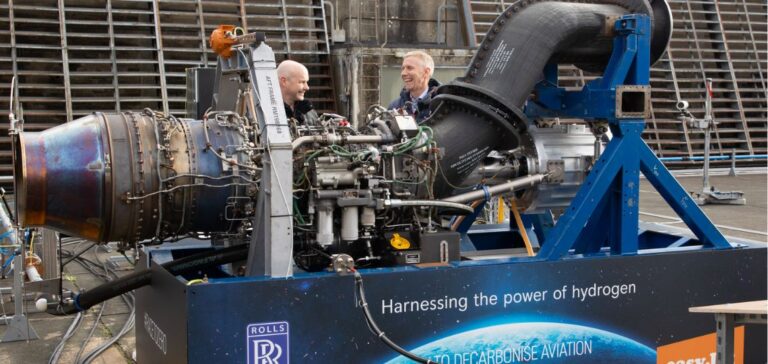Rolls-Royce and easyJet confirm the world’s first use of a modern hydrogen aircraft engine.
A successful trial
Rolls-Royce and easyJet are testing a concept demonstrator using renewable hydrogen created by wind and tidal power. The tests mark a major step toward proving that hydrogen could become a zero-carbon aviation fuel. In addition, it is a key piece of evidence in companies’ decarbonization strategies
Both companies aim to prove that hydrogen can provide energy in a safe way. Rolls-Royce and easyJet, for example, want to demonstrate that hydrogen is an effective solution for civilaircraft engines. In addition, the two companies have long-term ambitions to carry out flight tests.
Renewable hydrogen
The test took place in an outdoor test facility at MoD Boscombe Down, UK. It used a converted Rolls-Royce AE 2100-A regional jet engine. The renewable hydrogen came from EMEC (European Marine Energy Centre).
In addition, hydrogen is produced at the Eday tidal production and testing facility in the Orkney Islands. Business, Energy and Industrial Strategy Secretary Grant Shapps says:
“The UK is leading the global transition to guilt-free flying, and today’s test by Rolls-Royce and easyJet is an exciting demonstration of how commercial innovation can transform the way we live our lives. It is a true British success story, with the hydrogen used to power the jet engine now produced using tidal and wind power from the Orkney Islands in Scotland – and is a great example of how we can work together to make aviation cleaner while creating jobs across the country.”
Following the analysis of this first ground test Rolls-Royce and easyJet are planning a series of further bench tests.






















